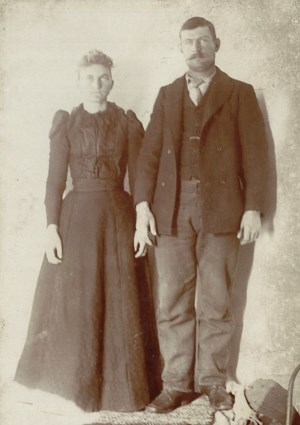
Courtesy of Frontier Historical Society, Colorado Sam Creek Cabin is one of the oldest log structures in Yukon-Charley Rivers National Preserve. Built by a local miner named Sandy Johnson near the banks of the Yukon River, the cabin was used as temporary lodging by people working their way up to mining claims on Sam and Ben Creeks. Arthur "Cap" Reynolds (seen at right with his wife Sadie in 1900) is the person most closely associated with the cabin and with Sam Creek. I am planting my garden now; I usually raise enough garden to last me through the winter... I have everything to get along with; I don't need anything—only company. -Cap Reynolds to his niece,
January 10, 1945
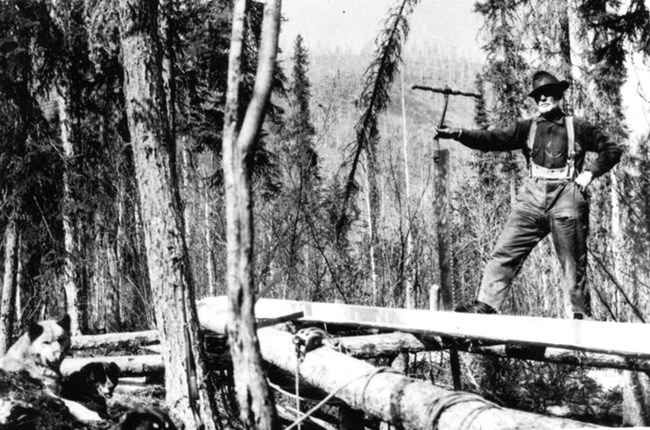
Courtesy of Frontier Historical Society, Colorado
By 1907 the Reynolds had reached Alaska and were on their way by steamboat to the tiny outpost of Nation City near the mouth of Fourth of July Creek. For the next ten years, the couple worked a mining claim far up the creek, thawing frozen ground using a boiler and fires, digging ditches to deliver water to the camp, and processing gold-rich gravel with a device called a rocker. They periodically left the daily grind of mining to visit Seattle or to travel northern rivers in a steamboat Arthur Reynolds built around 1914 and learned to captain (this is where he got his nickname "Cap"). Possibly due to ill health, Sadie Reynolds left Alaska in 1921 for California and never returned. 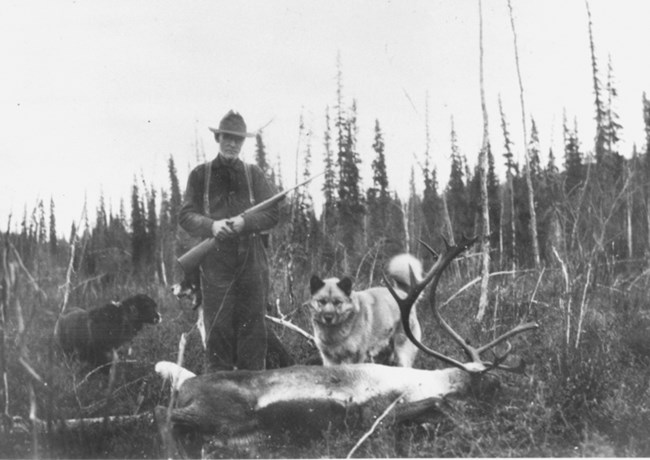
Courtesy of Frontier Historical Society, Colorado
For most miners along the Yukon River overnight wealth was but a dream. Gathering gold dust and nuggets and selling mining claims was rarely profitable enough, and gold-seekers did other work to feed themselves and supplement their incomes. For example, after his wife left, Reynolds learned to drive sled dogs and took up hunting and trapping. He spent five years working for the Alaska Railroad and eventually returned to the Yukon River in 1927 to settle in a large cabin on Sam Creek. At this remote homestead he prospected for gold, hunted moose and caribou, ran a trapline to harvest furs, processed meat, tended his dog team, and visited with his closest neighbor Sandy Johnson (the man who built Reynolds' home cabin and the smaller one near the Yukon's banks). Today we call this lifestyle subsistence mining because it demanded that miners be versatile and multi-talented. 
Courtesy of Frontier Historical Society, Colorado
The cabin Reynolds lived in was several miles up Sam Creek, and in order to send a letter or to pick up supplies, he had to travel 8 miles roundtrip to the Yukon River to meet a steamboat or 13 miles to Coal Creek mining camp. During the 1940s, when Reynolds was in his 70s, arthritis and declining health made it difficult for him to hunt or to see to his trapline. Writing to his nephew Ray Morgan, he explained,
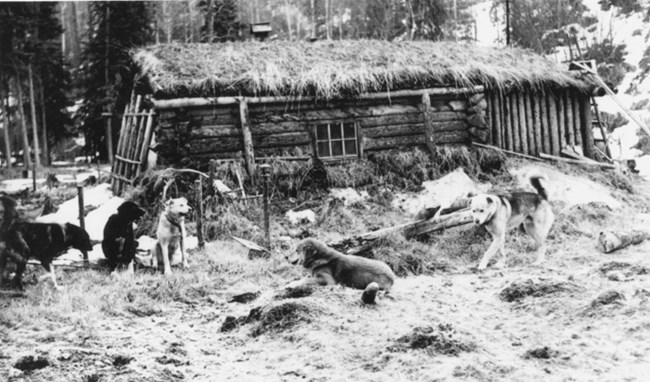
Courtesy of Frontier Historical Society, Colorado
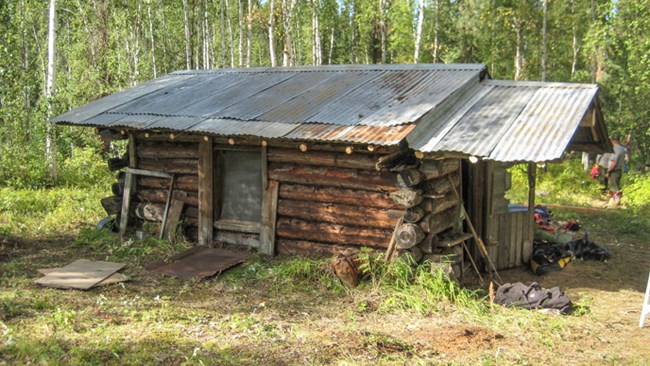
NPS/Chris Allan
Although today his home cabin is in ruins, the Sam Creek cabin used by Reynolds and others as temporary lodging near the Yukon is still standing, and in 2014 an NPS crew reinforced the walls and improved the roof in an attempt to preserve it for years to come. Near the cabin visitors can see remains of the elevated cache where Reynolds stored meat and other supplies and an example of the dog sleds that were so critical to the lives of all Yukon River pioneers. |
Last updated: July 24, 2015
